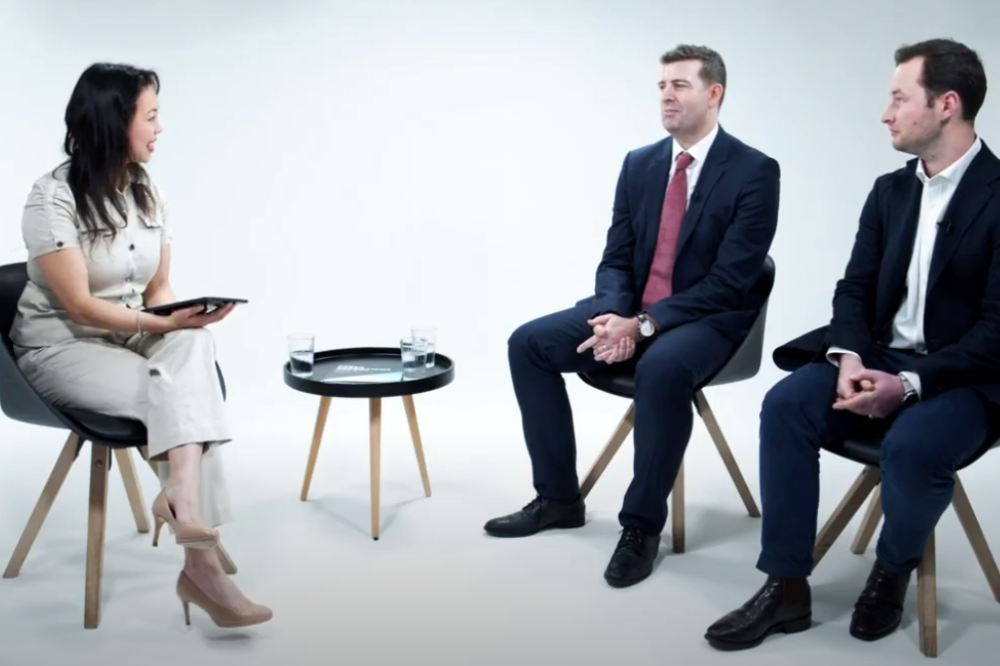Reinsurers on cyber and the ILS market

Reinsurers on cyber and the ILS market | Insurance Business New Zealand
Reinsurance
Reinsurers on cyber and the ILS market
Specialists share predictions on what to expect as 2024 rolls on
Reinsurance
By
Mia Wallace
Offering his “big prediction” for the cyber re/insurance market in 2024 during a recent webinar, Christopher Shafer, VP, head of North American cyber, Odyssey Reinsurance Company said he believes this will be the year of event covers in all shapes and sizes, whether that’s through ILS, more formal per occurrence, or catastrophe bonds.
2023 was a groundbreaking moment for the market, seeing the introduction of both the first private and public 144a cyber catastrophe bonds.
How will the ILS market for cyber evolve?
What needs to happen in order for the ILS sector to develop and support the growth of the cyber re/insurance market? Sharing his insight, Rory Egan (pictured left), head of cyber analytics at Aon Reinsurance Solutions, said it has been “exciting and impressive to see, almost from out of nowhere, that we now have multiple publicly tradeable cyber cat bonds coming into the market.”
“[As of Q4 of last year] there’s at least four that are publicly known about,” he said. “In addition to that, we’ve seen a variety in the types of instruments. We’ve seen industry loss warranties, we’ve seen indemnity products. So, it’s really been more than most people had expected. What will make that continue?
“The brokers and the dealmakers need to keep knocking on more doors. There are big pots of investment out there where they maybe don’t know about the opportunity yet. It’s about trying to unlock that new capital. For the players who have dipped their toe into the water from the ILS space on cyber, [it’s about] trying to get them to do even more.”
Supporting the growth of the ILS market
Egan also underscored the role education will play in helping the ILS market fulfil its full potential. It’s to be hoped that market players are making the right investments in terms of licensing vendor models and talking to brokers to get a full view of the risk, he said, as this will help create a much more nuanced understanding of what’s happening in the space.
“But so much happened back end of last year that I’m curious and wondering whether that can actually be matched this year, because it was a lot,” he said. “Certainly, I know our company and others are pushing to do even more. I think looking even more to the medium term and long term, there probably needs to be even more differentiation of products that are available to investors. What we’ve seen so far has been relatively broad, global-ish protection. And I think that’s going to go into different directions around maybe specific perils, or maybe specific geographies in terms of future instruments.”
What improvements can the market made to support further evolution?
Lending his perspective, Shafer corroborated that education remains the number one consideration when it comes to the growth of the ILS market. There are so many different approaches to defining an event, he said, and none of them necessarily offer the perfect answer though none of them are wrong either. Rather, it’s a matter of making sure that all parties in the transaction are on the same page about what the intent is and on making sure that there’s agreement that the wording aligns with the intent, and ensuring that everyone’s willing to improve upon it.
“Education is certainly going to be key to figuring out how the vendor models factor into quantifying the structure that’s being proposed,” he said. “Then from there, I think, it’s just about having a willingness, on both the supply and demand side.
“Insurers who want to buy into these structures may look and see that some of the deals getting done aren’t the most limit that’s possibly out there, especially when you contextualise it with the property market. And [the message is] to not get discouraged by that. This is a new area that’s growing. So we’re going to have to start small with something that’s more bite-sized and then scale our way up as everyone gets more comfortable with it.”
Keep up with the latest news and events
Join our mailing list, it’s free!






